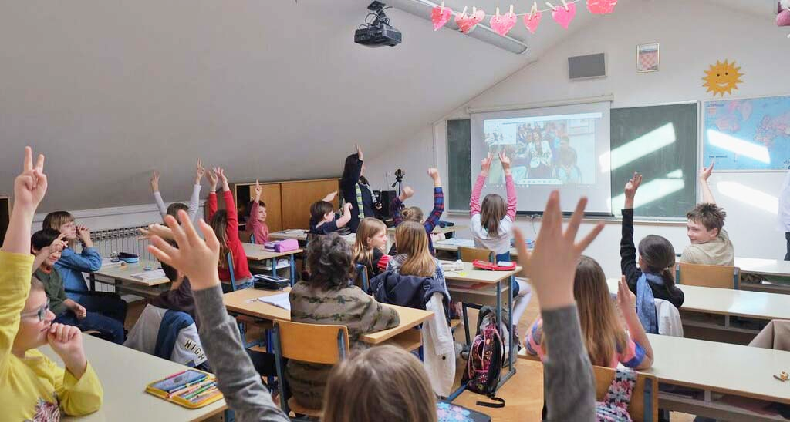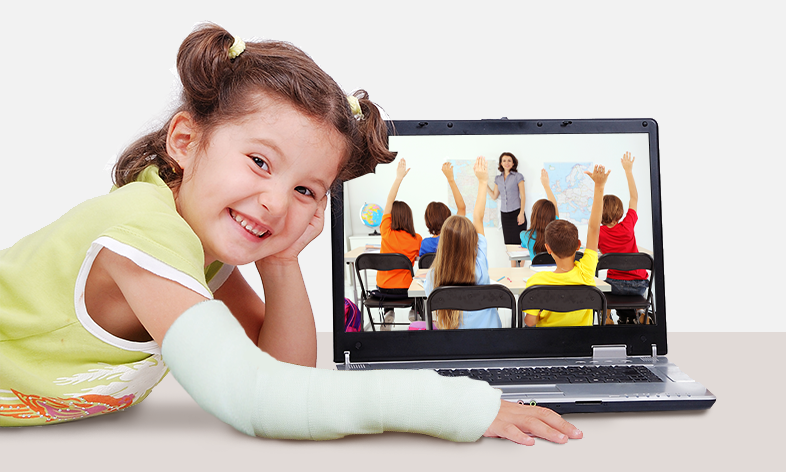Are you wondering how IT has changed the way we learn? Then you came to the right place.
Advancement in information technology (IT) has made distance and remote learning an increasingly more viable option for educators. Better video communication, lowered bandwidth usage and cost options, online engagement features, and unique information sharing applications, are allowing students to have more access to higher levels of education and the chance to get involved with new experiences. In recent years we have seen an explosion in the use of IT in education, which has allowed for many new and exciting teaching techniques to spring to life.
Let’s explore some of these new changes taking over education in our classrooms.
Access to High Quality Teachers
Students having access to a teacher is a growing concern worldwide.

The non-profit Learning Policy Institute found in a recent report that teacher education enrolment has dropped significantly by 35% between 2009 and 2014 and nearly 8 percent of the teacher workforce is leaving every year. These numbers raise serious concerns that there will not be enough teachers to meet the education demands of the future. One solution that has gained traction to increase access to teachers is distance and e-learning.
This new type of teacher access, created by IT in education, can be clearly seen in the recent education outreach initiatives in India. In India about 85% of government operated schools are located in villages and many do not have the ability to provide quality education services, which severely limits the prospects of student learning in those areas. The not-for-profit organization, eVidyaloka, set out with the aim to improve the quality of education in remote regions of India through the use of IT. eVidyaloka has provided education services to over 650 students in 13 schools across Jharkhand, Andhra Pradesh, and Tamilnadu, by connecting students through digital classrooms and video conferencing. With volunteers in 11 countries, they have been able to reach out and give India’s youth more opportunities to learn without teachers leaving their classroom.
If applied in other countries this new type of teaching could be one of the solutions needed to help fight against the decreasing access of students to teachers in rural areas, as well as provide a higher quality education than what might be locally available.
More Collaboration
Teachers and students are more connected today than ever before.

With the development of tablet devices, remote device learning, and content sharing apps, teachers can instantly share learning material and receive student work. Student and teacher feedback is made extremely efficient. This allows for teachers to engage more with students from anywhere and give students more access to the very important 1-on-1 teacher feedback needed to improve and learn.
Sick Days No Longer Leave Students Behind
No student should ever be left behind because they couldn’t attend class.

Recording and sharing tools and features in classroom IT; like visualizers, interactive flat panels, and classroom conferencing systems, allow teachers to distribute the day’s lesson far beyond the classroom. Students are now able review material at their leisure from the comfort of their own home and if they must take leave from class are able to easily remain caught up on learning.
Further, IT makes it possible for parents and students to stay connected and engaged with their children’s learning path and the teacher. These levels of connection keep parents informed about what their child is learning and makes parent/teacher interactions more meaningful and engaging.
Saving on Costs
Schools are avoiding unnecessary expenses by adopting technology.

A 15 year study conducted in the United States found that technology enhanced learning in institutions can have a significant impact on the costs associated with providing high quality education. On average projects that have implemented redesigned curriculums encapsulating technology saw a reduction in costs of 31%. Many of these cost reductions are from the addition of 3 main aspects to the teaching experience; namely digital content delivery, flexibility and scalability of content editing, and improved course management through automated administrative activities. This reduction in costs can be in and of itself a major factor when investing in IT for schools.
Increasing Cultural Exposure
IT opens students to new cultures and new ideas.

IT has allowed our classrooms to become virtual traveling machines. With improvement in the availability of video conferencing systems; students can now easily connect across thousands of kilometers to share and exchange ideas with classrooms that only a decade ago may never have contacted one another (want to see an example?). This exposure is making young learners more worldly and open to different cultures and new ideas, all while preparing them for the multicultural workforce.
Connecting Everything Together
Increased connectivity, engagement, and the ability of the teacher to reach far outside the classroom are showing that the classroom learning experiences is changing how students learn and how schools teach.
IT is making new and exciting experiences possible for the future generation of young learners and is connecting teachers and parents like never before.